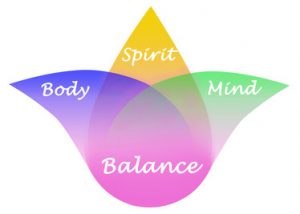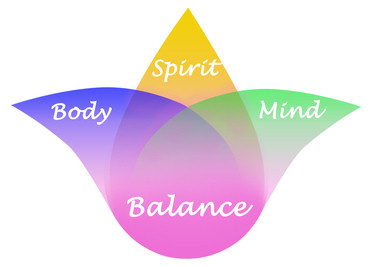By: Janice Hughes & Dennis Hughes ~
Deepak Chopra, M.D. is a bestselling author, teacher, trained medical doctor and pioneer of the mind-body connection. His books include The Seven Spiritual Laws of Success, How to Know God, and The Spontaneous Fulfillment of Desire. Dr. Chopra co-founded The Chopra Center for Well-Being in Carlsbad, CA to advance the cause of mind-body-spiritual healing, education, and research.
******************************
 The Share Guide: What do you think are the most significant health benefits of meditation?
The Share Guide: What do you think are the most significant health benefits of meditation?
Deepak Chopra: They are stress reduction, better sleep, lower blood pressure, improved cardiovascular function, improved immunity, and the ability to stay centered in the midst of all the turmoil that’s going on around you. Meditation helps you do less and accomplish more.
The Share Guide: I understand there’s now 15 million Americans who are practicing yoga, but most are doing just asanas (poses). How many do you think are aware of the spiritual aspect of yoga?
Deepak Chopra: Not enough. Because when it started in the U.S. it was mainly as another form of physical fitness. Somehow that gained prominence and it became a fad–just a good way to improve flexibility and muscle strength. Of course, these are benefits of yoga. But the larger picture of yoga as it was meant to be understood originally is that yoga is union. It’s only now that people are actually becoming aware of the spiritual aspects of yoga.
The Share Guide: In your book The Seven Spiritual Laws of Yoga, you describe the eight limbs of Raja yoga. And one thing that surprised me was that you said they’re not to be seen as sequential stages. I always thought the first limbs were preparatory for the last three, which are the meditation stages.
Deepak Chopra: That’s one school of thought, but not what I learned. I had my spiritual apprenticeship with the Shankara- charya school in India, and my immediate mentor was Maharishi Mahesh Yogi, who brought Transcendental Meditation to the West. Maharishi was a disciple in turn of the Shankaracharya. That tradition goes back to the ninth century sage Adi Shankara. Their interpretation always has been that the eight limbs of yoga are practiced simultaneously. In that way it is similar to the Eightfold Path in Buddhism. The eight limbs are Niyama, Yama, Asana, Pranayama, Pratyahara, Dharana, Dhyana, and Samadhi and are all actually combined into one discipline. Yama and Niyama are rules of social and personal conduct, so why not include them as things that you do? It’s about the internal shift in attitude that you have to make. Pratyahara and Pranayama are actually forms of Raja yoga, and therefore they are complementary to Asana. Dharana, Dhyana, and Samadhi are supposed to be the culmination of this practice, but all eight limbs are still part of your daily practice.
The Share Guide: All right, so we can work on all the limbs at the same time.
Deepak Chopra: Right, and we should.
The Share Guide: I’d like to ask you about mantras. I received a personal mantra from Dr. Warren Mills, one of your Primordial Sound Meditation teachers. Can you discuss what mantras are in general and what is specifically beneficial about receiving a personal mantra?
Deepak Chopra: There are many kinds of mantras. The mantra that you are using as part of your Primordial Sound Meditation instruction as taught by the Chopra Center, is called a bija mantra. The word bija means seed. It’s the most basic kind of mantra there is, and it’s traditionally used for transcending or going beyond the realm of thought. The way that mantra is selected is based on your time of birth and your place of birth. Based on that information, the person who is giving you the mantra can actually know the exact position of the moon at the time and location of your birth. There are 108 such positions, and so there are 108 mantras, and they are selected according to this principal. These days we have a computer program to do this, so we can take your information and immediately get your astrological chart. This knowledge goes back hundreds of years. Now there are other mantras, of course, that have very specific effects. There is a huge body of knowledge on mantras for healing, for wealth consciousness, for invoking specific deities that are symbolic representations of psychic energy within your own self. Ever since I was a child, I’ve used thirty or forty different mantras for different reasons: for making me go to sleep if I can’t sleep; for increasing my energy; for increasing my desire for knowledge, etc. Usually mantras are given by teachers who are very knowledgeable and intimate with the tradition. In fact, they are passed on from teacher to disciple. Then the disciple one day becomes a teacher himself or herself, and passes the mantra on again. But as I said, it’s a huge body of knowledge.
The Share Guide: I am familiar with some for specific things like the Lakshmi mantra for generating righteous wealth. What about kirtan, which is devotional chanting with music?
Deepak Chopra: Kirtan is devotional chanting, but it does not always involve mantra.
The Share Guide: Regarding the seed mantra, is that supposed to be chanted out loud or quietly?
Deepak Chopra: Silently. Because it’s a seed mantra, at some point in meditation it disappears.
The Share Guide: Another aspect is the yantra or the mandala. I think those words are interchangeable.
Deepak Chopra: Yes, they are.
Share Guide: We use the Sri Yantra mandala in meditation class to gaze on while we meditate.
Deepak: Right. The Sri Yantra is the visual vibration of the mantra OM.
Share Guide: I’ve been told to draw the energy from the center of the Sri Yantra into your heart chakra. Is this how you use it, or are you just supposed to gaze at it?
Deepak Chopra: That’s one way. But you can just sit quietly and gaze at a yantra and it will draw your attention into the bindu (the point in the center) and then you disappear in it’s unboundedness.
Share Guide: I see meditation as a way to bridge the apparent gap between the physical and the spiritual. What are your thoughts on this?
Deepak Chopra: Meditation has only one reason: to get in touch with your soul, and then go beyond that and get in touch with the consciousness that your soul is a ripple of. It might be a good stress management technique, but there is only one real purpose, which is the means to enlightenment.
Share Guide: When I interviewed Dr. John Hagelin a few years ago (he also works closely with Maharishi), I remember him talking about five states of awareness: waking, sleeping, dreaming, meditating, and the fifth state which really intrigued me, a state of enlightenment in action, keeping that consciousness in your actions.
Deepak Chopra: There are actually seven states of awareness. Deep sleep is the first; dreaming is the second; then the third stage is waking; the forth stage is meditation; the fifth is called cosmic consciousness, which is when you have that internal experience of meditation in deep sleep, dreaming, and waking, so you are established in that state even while in action. Then beyond cosmic consciousness is the sixth stage of consciousness which is God consciousness, where you become aware of the spirit in the objects of your perception. So you look at a flower and you can feel the presence of divinity within it. Or you look at a telephone or a table or a shoe and you can feel the presence of the infinite in it. The infinite is everywhere. And the seventh stage is the ever present witnessing awareness in the object of experience. They fuse and become one, and when that happens then you experience enlightenment–you see the whole world as an expression of yourself and you see that the ground of your being is also the ground of all existence.
******************************
Refer to Deepak Chopra Radio in the side-bar of this Blog for more on the topic of Meditation plus many other holistic health subjects..
******************************




